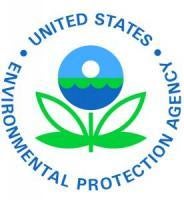WASHINGTON – Recognizing the importance of clean water and healthy watersheds to our economy, environment and communities, the Obama administration released a national clean water framework today that showcases its comprehensive commitment to protecting the health of America’s waters. The framework emphasizes the importance of partnerships and coordination with states, local communities, stakeholders and the public to protect public health and water quality, and promote the nation’s energy and economic security.
For nearly 40 years, the Clean Water Act, along with other important federal measures, has been a cornerstone of our effort to ensure that Americans have clean and healthy waters. The administration’s framework outlines a series of actions underway and planned across federal agencies to ensure the integrity of the waters Americans rely on every day for drinking, swimming, and fishing, and that support farming, recreation, tourism and economic growth. It includes draft federal guidance to clarify which waters are protected by the Clean Water Act nationwide; innovative partnerships and programs to improve water quality and water efficiency; and initiatives to revitalize communities and economies by restoring rivers and critical watersheds.
“Clean water and healthy waterways are vital to the health and vibrancy of our communities and the strength of our economy,” said Nancy Sutley, chair of the White House Council on Environmental Quality. “Working with our partners across communities, governments and sectors, we are taking comprehensive action to ensure Americans have the clean and healthy waters they need and deserve.”
”The steps we're outlining today will be instrumental to protecting the waters of the United States, and ensuring that the vital natural resources our communities depend on for their health and their economy are safeguarded for generations to come,” said EPA Administrator Lisa P. Jackson. “After four decades of progress on clean water, there is still work to be done to address unfinished business and tackle new threats to our waters. American families and businesses are counting on us to maintain and improve the rivers, lakes, streams and other waters that support thousands of communities and millions of jobs across the country.”
"Healthy rivers and clean waters are fundamental to our economy, our health, and our way of life," said Secretary of the Interior Ken Salazar. "With growing pressures on our natural systems, we must work to secure cleaner, safer, and more reliable water supplies for our communities."
“As our nation’s foremost conservationists, farmers, ranchers and forest owners have a values system rooted in rural America that recognizes we cannot continue to take from the land without giving something back,” said Agriculture Secretary Tom Vilsack. “At USDA, we are working with farmers, ranchers and forest owners to conserve land, plant stream buffers for cleaner water, and install other conservation practices. We also will continue to invest in rural water and community facility projects that help small towns ensure their citizens have access to safe and reliable drinking water. The draft Clean Water Act guidance released today reflects USDA's work with our federal partners by maintaining existing exemptions for ongoing agricultural and forestry activities, thereby providing farmers, ranchers and forest landowners with certainty that current agricultural and forestry activities can continue.”
"The Army is very proud of our ecosystem restoration efforts across the nation,” said Assistant Secretary of the Army for Civil Works Jo-Ellen Darcy. “The proposed joint EPA and Army guidance will clarify Clean Water Act jurisdiction and help the Corps and its partner agencies protect important aquatic resources and watersheds that communities rely on for their quality of life and essential services."
Clean water provides critical health, economic and livability benefits to American communities. Since 1972, the Clean Water Act has kept billions of pounds of pollution out of American waters, doubling the number of waters that meet safety standards for swimming and fishing. Despite the dramatic progress in restoring the health of the nation’s waters, an estimated one-third of American waters still do not meet the swimmable and fishable standards of the Clean Water Act. Additionally, new pollution and development challenges threaten to erode our gains, and demand innovative and strong action in partnership with federal agencies, states, and the public to ensure clean and healthy water for American families, businesses, and communities.
The Obama administration is safeguarding clean water by:
Promoting Innovative Partnerships
Federal agencies are partnering with states, tribes, local governments and diverse stakeholders on innovative approaches to restore urban waters, promote sustainable water supplies, and develop new incentives for farmers to protect clean water.
Enhancing Communities and Economies by Restoring Important Water Bodies
The Obama administration is dedicating unprecedented attention to restoring iconic places like the Chesapeake Bay, California Bay-Delta, Great Lakes, Gulf of Mexico and Everglades, investing in action and helping states, local governments and stakeholders find pollution control solutions that are tailored to their specific needs.
Innovating for More Water Efficient Communities
The administration is working with policymakers, consumers, farmers and businesses to save water – and save money – through 21st century water management policies and technology.
Ensuring Clean Water to Protect Public Health
The Obama administration is aggressively pursuing new ways to protect public health by reducing contaminants in Americans’ drinking water. We are updating drinking water standards, protecting drinking water sources, modernizing the tools available to communities to meet their clean water requirements, and providing affordable clean water services in rural communities.
Enhancing Use and Enjoyment of our Waters
The administration is promoting stewardship of America’s waters through innovative programs and partnerships. These efforts include expanding access to waterways for recreation, protecting rural landscapes, and promoting public access to private lands for hunting, fishing and other recreational activities.
Updating the Nation’s Water Policies
The administration is strengthening protection of America’s waters and American communities. We are modernizing water resources guidelines, and updating federal guidance on where the Clean Water Act applies nationwide. The draft guidance will protect waters that many communities depend upon for drinking, swimming, and fishing, and provide clearer, more predictable guidelines for determining which water bodies are protected from pollution under the Clean Water Act. The guidance is open for 60 days of public comment to all allow all stakeholders to provide input and feedback before it is finalized.
Supporting Science to Solve Water Problems
The administration is using the latest science and research to improve water policies and programs and identify and address emerging pollution challenges.
More information and to read the Obama administration’s clean water framework:
http://www.whitehouse.gov/administration/eop/ceq/initiatives/clean-water



 />i
/>i
